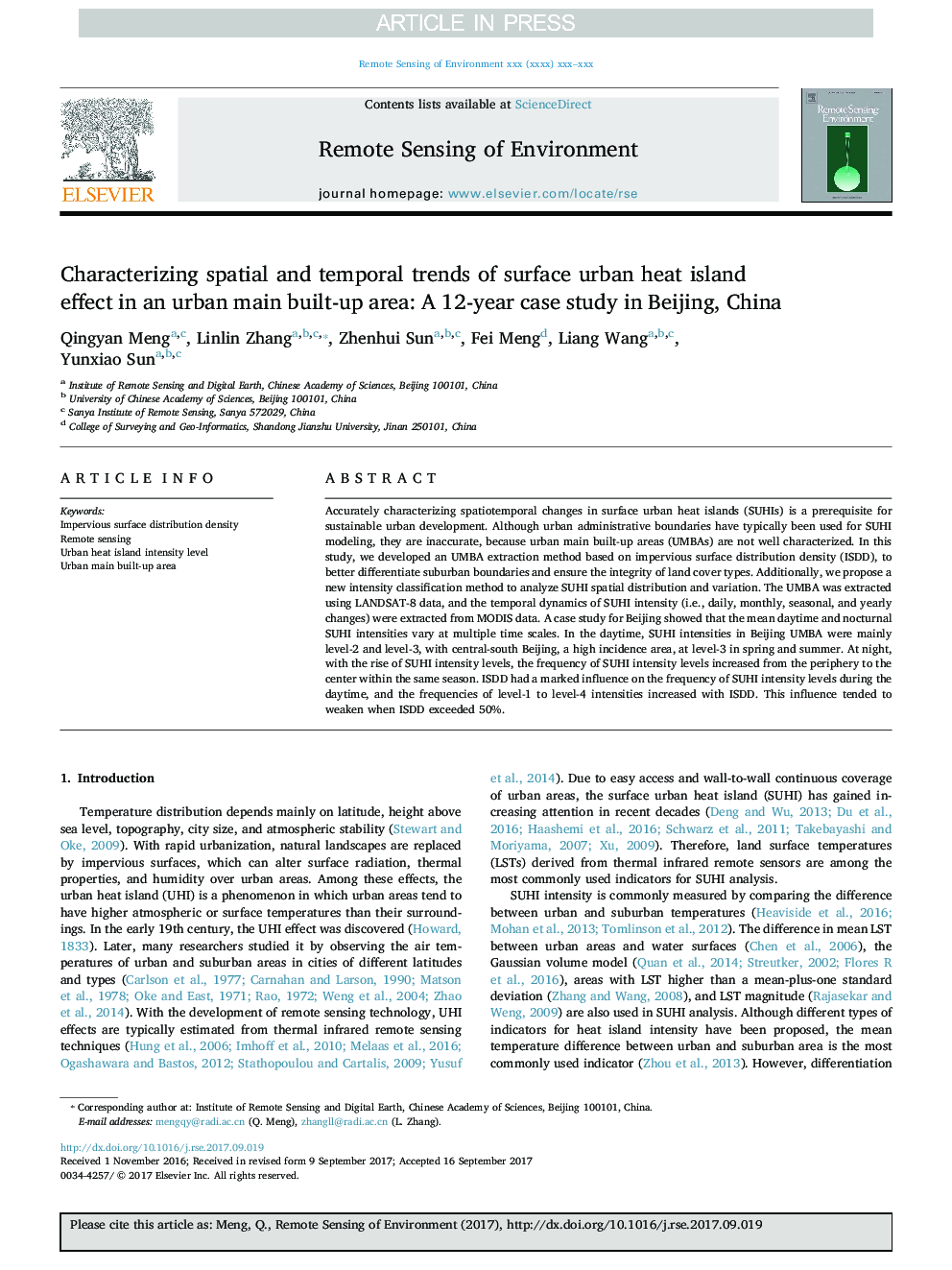| Article ID | Journal | Published Year | Pages | File Type |
|---|---|---|---|---|
| 8866904 | Remote Sensing of Environment | 2018 | 12 Pages |
Abstract
Accurately characterizing spatiotemporal changes in surface urban heat islands (SUHIs) is a prerequisite for sustainable urban development. Although urban administrative boundaries have typically been used for SUHI modeling, they are inaccurate, because urban main built-up areas (UMBAs) are not well characterized. In this study, we developed an UMBA extraction method based on impervious surface distribution density (ISDD), to better differentiate suburban boundaries and ensure the integrity of land cover types. Additionally, we propose a new intensity classification method to analyze SUHI spatial distribution and variation. The UMBA was extracted using LANDSAT-8 data, and the temporal dynamics of SUHI intensity (i.e., daily, monthly, seasonal, and yearly changes) were extracted from MODIS data. A case study for Beijing showed that the mean daytime and nocturnal SUHI intensities vary at multiple time scales. In the daytime, SUHI intensities in Beijing UMBA were mainly level-2 and level-3, with central-south Beijing, a high incidence area, at level-3 in spring and summer. At night, with the rise of SUHI intensity levels, the frequency of SUHI intensity levels increased from the periphery to the center within the same season. ISDD had a marked influence on the frequency of SUHI intensity levels during the daytime, and the frequencies of level-1 to level-4 intensities increased with ISDD. This influence tended to weaken when ISDD exceeded 50%.
Keywords
Related Topics
Physical Sciences and Engineering
Earth and Planetary Sciences
Computers in Earth Sciences
Authors
Qingyan Meng, Linlin Zhang, Zhenhui Sun, Fei Meng, Liang Wang, Yunxiao Sun,
